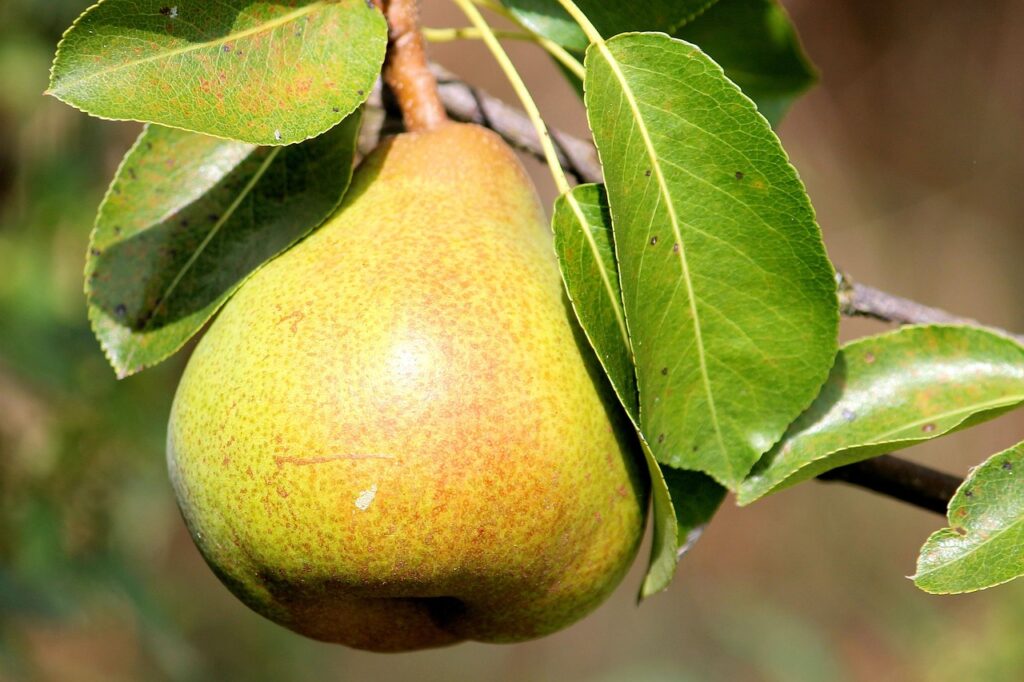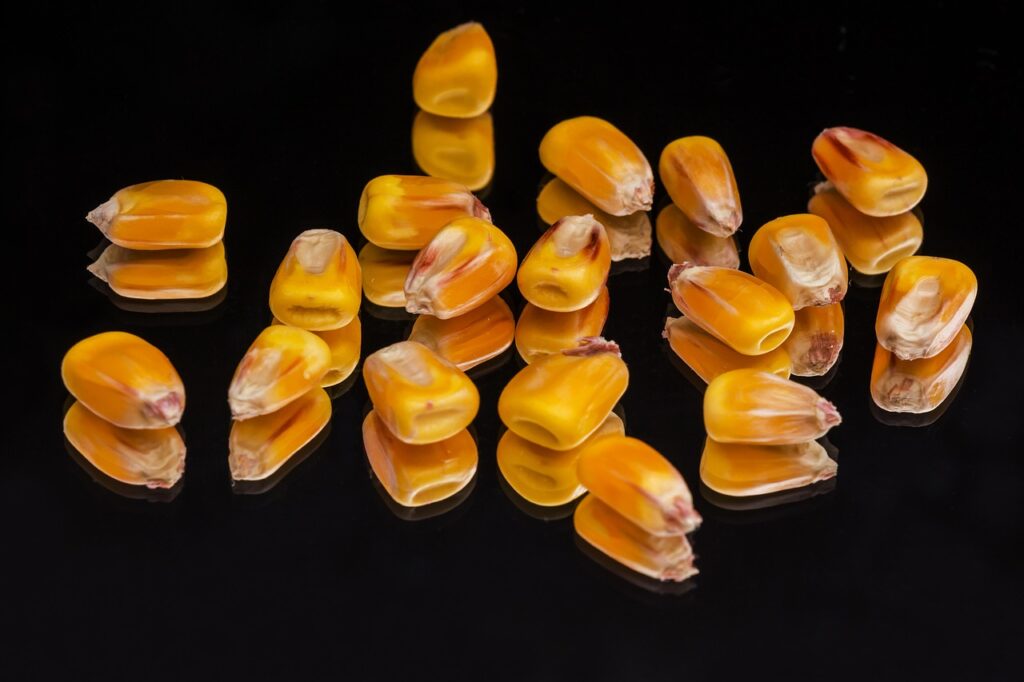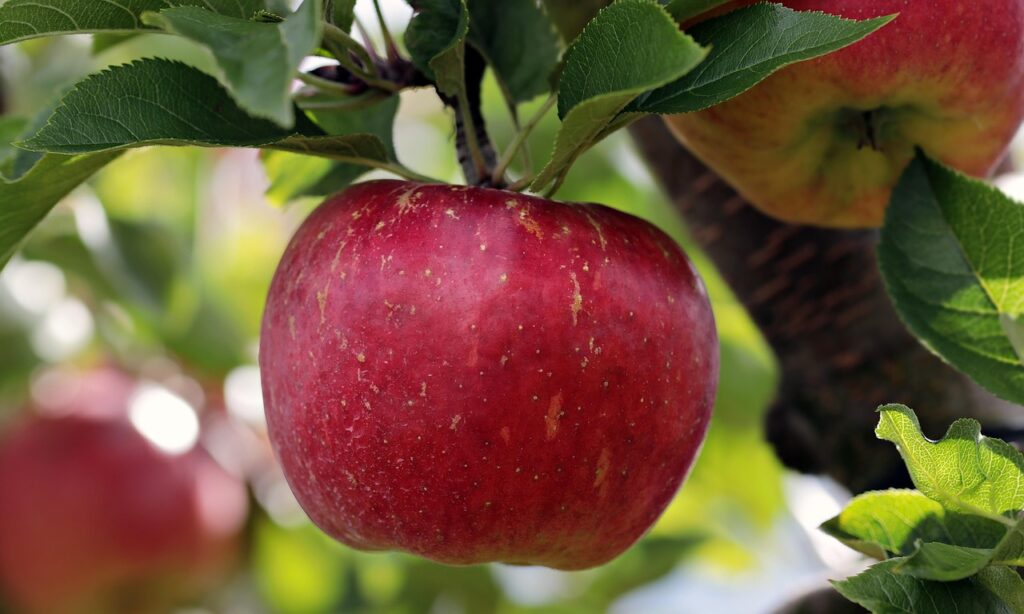
Think you know your food? Think again! We often take for granted the delicious, nourishing ingredients that fill our plates, assuming their journey from farm to fork is straightforward. Yet, beneath the surface of even the simplest foods lies a fascinating world of scientific complexity, where hidden properties and unexpected interactions can profoundly influence our health and dining experience. What we perceive as ‘safe’ or ‘beneficial’ today often stands on the shoulders of millennia of trial-and-error, coupled with the relentless curiosity of modern scientific inquiry.
From ancient cooking techniques to cutting-edge laboratory research, humanity has continuously sought to understand, tame, and optimize our food sources. Sometimes, this journey reveals components that, left unchecked, could pose risks; other times, it uncovers incredible potentials waiting to be harnessed. It’s a dynamic interplay between nature’s bounty and human ingenuity, constantly refining our understanding of what makes food truly good—not just in taste, but in its fundamental safety, nutritional value, and overall quality.
Today, we’re diving into some truly intriguing findings from the pages of *Foods* journal, a peer-reviewed, open access publication that’s at the forefront of food science. These recent studies shed light on how scientific investigations are transforming our understanding of everything from raw ingredients to advanced nutritional supplements, revealing the subtle challenges and spectacular solutions that shape the edibles we consume. Get ready to have your culinary perceptions delightfully challenged as we unearth the scientific mysteries behind the safety and quality evolution of nine seemingly simple foods and food-related innovations.
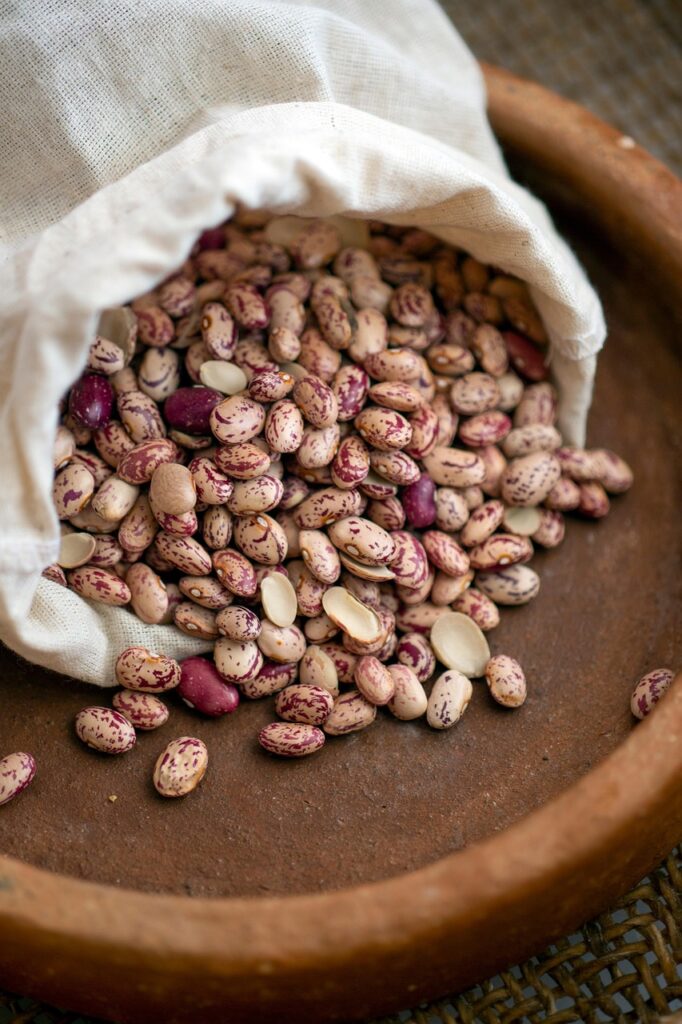
1. **Raw Kidney Beans: From Potentially Toxic to Nutritional Powerhouse**Many of us regularly enjoy kidney beans, a staple in countless cuisines worldwide. They’re lauded for their fiber, protein, and essential minerals. However, did you know that in their raw state, these humble legumes harbor a secret? Raw kidney beans, scientifically known as *Phaseolus vulgaris L.*, are deceptively simple and contain natural compounds that, if consumed uncooked, can be quite problematic for human health. This inherent toxicity has necessitated careful preparation methods throughout history, highlighting an ancient wisdom steeped in practical food safety.
The culprits behind this hidden danger are primarily a group of antinutrients, including phytic acid, tannins, and saponins. These compounds, while natural, can interfere with nutrient absorption and, in sufficient quantities, cause digestive distress or even more severe reactions. For generations, traditional cooking practices like prolonged soaking and boiling have been the go-to methods to neutralize these antinutrients, transforming a potentially hazardous ingredient into a wholesome and safe food. The effectiveness of these methods is undeniable, but they often come with significant time and energy commitments, posing challenges for modern, large-scale food production.
Recognizing the industrial need for more efficient processing, recent research has explored innovative approaches to rapid detoxification. One such study focused on developing an industrially viable method for the rapid detoxification of raw kidney beans while simultaneously enhancing their nutritional properties. The aim was to move beyond lengthy traditional boiling methods without compromising safety or quality. This is where the ingenious application of modern food science truly shines, offering solutions that honor the nutritional value of the bean while bypassing historical limitations.
Through optimized 5-minute water soaking combined with intermittent microwaving (500 W for 5 minutes), scientists achieved remarkable results. This integrated approach led to significant reductions in the troublesome antinutrients: phytic acid saw a decrease of 43–49%, tannins were slashed by an impressive 74–90%, and saponins were reduced by 59–68%. Crucially, these reductions brought all key antinutrient levels below established safety thresholds across four different colored varieties of kidney beans. What’s more, this rapid processing concurrently elevated the beans’ antioxidant capacity, with Ferric Reducing Antioxidant Power (FRAP) increasing by 66–115%.
This innovative water-assisted microwave processing offers a compelling solution, achieving comparable detoxification to traditional 30-minute boiling in just 5 minutes. It fundamentally transforms raw kidney beans from a food requiring extensive, slow preparation due to its inherent risks, into a safer, nutrient-enhanced legume ready for industrial-scale production. This scientific breakthrough ensures that a globally important food staple can be enjoyed more efficiently and safely, showcasing how science continually refines our culinary practices for better health and convenience.
Read more about: Unraveling the ‘Danger’ Myth: 8 Foods and Components Whose Truths Science Uncovered
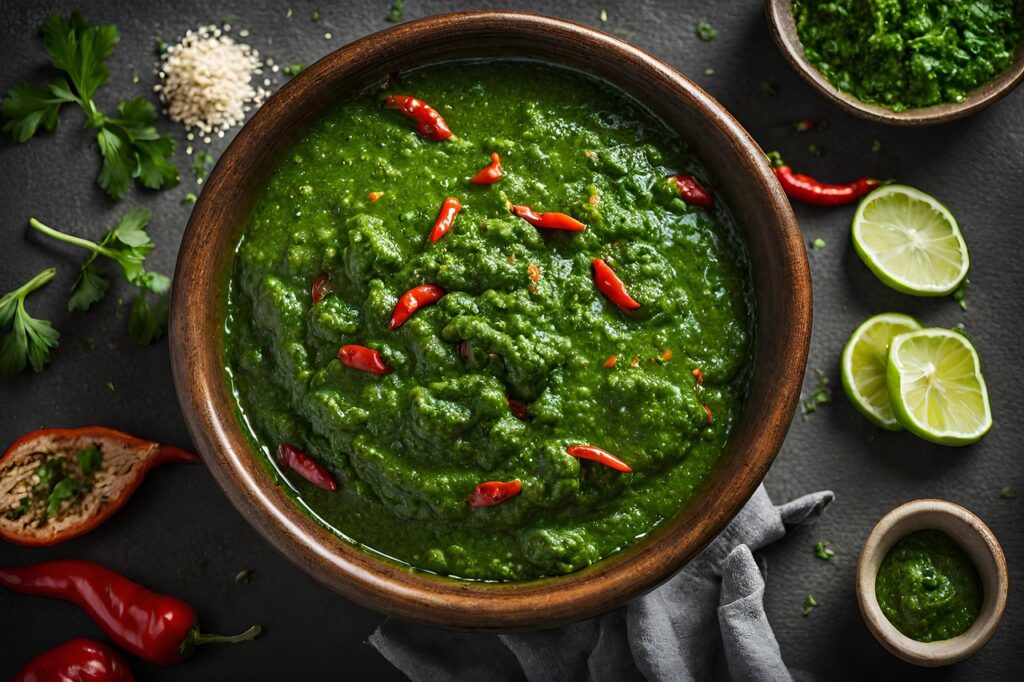
2. **Fermented Cricket Paste: A Novel Protein with Enhanced Safety**As the global population grows and concerns about sustainable food sources intensify, edible insects have emerged as a fascinating and increasingly relevant topic. Crickets, in particular, are gaining traction as a sustainable protein. However, for many cultures, the idea of consuming insects, even in processed forms, remains novel, and potential safety concerns—or simply a lack of familiarity—can be a barrier to acceptance. This is where scientific innovation steps in, aiming to transform these novel foods into widely accepted and nutritionally valuable ingredients.
Fermentation, an age-old method of food preservation and enhancement, has proven to be a game-changer for novel foods like insect-based products. It’s a process that not only improves the sensory profiles—think richer flavors and more appealing textures—but also significantly boosts the nutritional qualities of various ingredients. For edible insects, fermentation can be the key to unlocking their full potential, addressing both palatability and safety concerns that might otherwise limit their adoption. It’s a testament to how traditional techniques, when coupled with modern scientific understanding, can innovate our food systems.
A recent study aimed to develop a fermented cricket paste, drawing inspiration from the methodology of traditional fermented shrimp paste, a culinary staple in many parts of the world. By applying a biphasic fermentation protocol, researchers meticulously analyzed the physiochemical, nutritional, microbiological, and sensory properties of the resulting cricket paste. This detailed investigation provides critical insights into how such a novel food performs under controlled conditions, particularly concerning its safety and acceptability as a future ingredient.
The findings were quite compelling. The fermented cricket paste exhibited a comparable protein content to shrimp paste but boasted a higher carbohydrate profile and lower fat content, offering a distinct nutritional advantage. More importantly, the cricket paste showed enhanced stability and safety, notably containing a significantly lower level of histamine (2.37 ppm) compared with traditional shrimp paste (50.51 ppm). Histamine can be a concern in fermented products if not properly controlled, leading to adverse reactions in sensitive individuals, so this finding is particularly significant for consumer safety.
Despite distinct sensory profiles—the cricket paste was characterized by a dark color, coarse texture, nutty/earthy aroma, and a bitter, less umami taste—consumer liking for chili pastes made with either product was statistically identical. This remarkable outcome demonstrates that fermented cricket paste is not only a safe, stable, and nutritionally advantageous alternative, but also highly acceptable to consumers when incorporated as a culinary ingredient. It highlights how science can overcome novelty and perception challenges, paving the way for sustainable and safe food choices.

3. **Poria cocos Polysaccharide-Modified Selenium Nanoparticles: Optimizing Essential Micronutrient Delivery**
Selenium is a fascinating and essential micronutrient vital for human health, playing critical roles in antioxidant defense, thyroid function, and immune responses. However, like many trace elements, its therapeutic window is narrow; too little leads to deficiency, and too much can be toxic. In recent years, selenium nanoparticles (Se NPs) have garnered considerable attention as a novel and potentially superior alternative to other forms of selenium in nutritional dietary supplements, promising enhanced bioavailability and reduced toxicity. Yet, this promising innovation faced a significant hurdle that constrained its practical application.
The primary challenge with conventional selenium nanoparticles has been their limited stability and a pronounced tendency to aggregate in aqueous environments. Imagine trying to deliver a precisely measured, stable dose of a beneficial compound if it clumps together or degrades unpredictably! This instability not only complicates manufacturing and storage but also raises questions about the consistency of dosage and potential efficacy once consumed. Ensuring the stability of such a delicate compound is paramount for its safe and effective use, especially when intended for dietary supplementation.
Scientists have been hard at work addressing this stability issue, leading to the development of an exciting solution: Poria cocos polysaccharide-modified Se NPs (PCP-Se NPs). These novel nanoparticles were synthesized using a sophisticated selenite/ascorbic acid chemical reduction method, carefully designed to impart greater stability. Structural characterization confirmed their success: PCP-Se NPs exhibited a uniformly dispersed spherical morphology with an average particle size of 66.64 ± 0.30 nm, along with an amorphous crystal structure, indicative of their well-formed and stable nature.
The enhanced stability of PCP-Se NPs was vividly demonstrated through rigorous testing. Compared to their unmodified counterparts, these modified nanoparticles showed remarkably low selenium release (only 8.83 ± 0.73%) after simulated gastrointestinal digestion. This means more of the beneficial selenium makes it to where it’s needed in the body, without premature degradation. Furthermore, they exhibited excellent storage stability and salt ion stability, critical factors for real-world applications. Beyond stability, PCP-Se NPs also displayed potent antioxidant activity, effectively scavenging DDPH and ABTS radicals, and impressive anti-inflammatory capabilities, reducing inflammatory factor levels and alleviating oxidative stress in cells.
This breakthrough in nanoparticle technology provides a crucial basis for improving the stability of selenium nanoparticles, fundamentally transforming their practical viability. It’s a significant step towards developing novel selenium-enriched dietary supplements that are not only more stable and effective but also safer, ensuring that this essential micronutrient can be delivered reliably to those who need it. This research exemplifies how scientific advancements overcome inherent limitations to harness the full potential of beneficial compounds.
4. **Shellac–Chitosan Nanocomposites: Crafting Safer and More Stable Food Emulsifiers**In the intricate world of food manufacturing, emulsifiers are unsung heroes, silently working to keep our favorite products—from salad dressings to ice cream—smooth, consistent, and appealing. They prevent ingredients that naturally resist mixing, like oil and water, from separating. The demand for natural, effective, and safe emulsifiers is ever-growing, pushing scientific exploration into novel biomaterials. Shellac (SH) and chitosan (CS), both natural polymers, offer intriguing possibilities, but harnessing their full potential for food applications requires a deep dive into their chemical dance.
The challenge lies in precisely controlling how these natural components interact to form stable and functional nanocomposites, particularly as Pickering emulsifiers. Pickering emulsifiers, which are solid particles that stabilize emulsions, are gaining traction due to their high stability and potential for cleaner labels. Scientists understood that mixing alkaline shellac and acidic chitosan solutions could drive the formation of nanocomposites with interfacial activity—their ability to stabilize the oil-water interface. However, a significant scientific mystery remained: how exactly does the solution addition sequence affect their formation and, crucially, their properties?
This ambiguity sparked a detailed investigation into the influence of addition order. The study systematically explored how varying the sequence of mixing shellac and chitosan solutions impacts the formation, physicochemical properties, and ultimately, the interfacial activity of the resulting nanocomposites. Researchers observed that pH variation during mixing was indeed a key driver for nanocomposite formation, with optimal electrostatic interactions occurring at a final pH near 5.0. They also pinpointed an ideal SH:CS mass ratio of 2:3 for the most efficient assembly, laying down crucial parameters for effective formulation.
The research revealed that the addition sequence played a pivotal role in determining the final nanocomposite structure. Adding shellac to chitosan produced distinct core–shell structures, where one polymer encased the other. Conversely, reversing the order—adding chitosan to shellac—yielded co-assembled hybrid nanocomposites, where the two polymers were intimately intertwined. This fundamental structural difference directly translated into varying interfacial behaviors. The co-assembled nanocomposites proved particularly adept, effectively balancing the inherent hydrophobicity of shellac with the hydrophilicity of chitosan to achieve moderate wettability, a critical characteristic for an effective emulsifier.
This precise control over structure through the addition sequence is a powerful tool. The balanced wettability of the co-assembled nanocomposites significantly reduced interfacial tension, thereby enhancing their emulsifying performance. This study not only solves a key scientific mystery about these biomaterials but also underscores the critical role of careful design in tailoring the properties of pH-driven SH-CS nanocomposites. It highlights their strong potential as high-performance Pickering emulsifiers, promising safer, more stable, and more effective food products for consumers, showcasing how meticulous scientific detail can profoundly impact everyday food quality.

5. **Hesperidin: Unlocking a Natural Compound’s Atherosclerosis-Fighting Potential**In the ongoing battle against chronic diseases, the quest for natural compounds with therapeutic potential is a vibrant field of scientific inquiry. Atherosclerosis (AS), a condition characterized by the hardening and narrowing of arteries, remains a significant global health concern, and currently lacks fully effective treatments. This challenge pushes researchers to look for innovative solutions, often turning their attention to the wealth of bioactive compounds found within the very foods we consume daily. It’s a testament to the idea that sometimes, the most potent medicines are hiding in plain sight, waiting for scientific validation.
This is where hesperidin, a common flavonoid found abundantly in citrus fruits, steps into the spotlight. While known for its antioxidant properties, a recent study delved deeper, investigating hesperidin as a potential therapy for atherosclerosis. Using Apolipoprotein E knockout (ApoE−/−) mice as a robust model of atherosclerosis, researchers sought to uncover the specific mechanisms by which this seemingly simple compound might exert its profound health benefits. This approach moves beyond general observations to pinpoint the precise biological pathways involved.
What they discovered was nothing short of remarkable. Hesperidin treatment significantly improved physiological and metabolic health in the atherosclerotic mice. Beyond that, it visibly reduced plaque formation in the arteries, which is a hallmark of atherosclerosis progression. Furthermore, the treatment effectively decreased systemic inflammation and oxidative stress, two key drivers of cardiovascular disease. These comprehensive improvements suggest hesperidin is not just targeting symptoms but addressing multiple facets of the disease’s pathology, painting a picture of a truly promising intervention.
Perhaps the most surprising revelation lay in hesperidin’s mechanism of action, which involves an unexpected player: the gut microbiota. The study found that hesperidin actively reshaped the gut microbiota, leading to an increase in beneficial bacteria, specifically *Verrucomicrobia* and *Bacteroidota*. This microbial shift was critically linked to a significant lowering of fecal levels of branched-chain amino acids (BCAAs)—valine, leucine, and isoleucine—by 27.4%, 50.1%, and 40.8%, respectively. These BCAAs have been implicated in metabolic dysfunction and cardiovascular disease, making their reduction a key therapeutic target.
The findings suggest that hesperidin alleviates atherosclerosis not through a single direct action, but likely by modulating the intricate gut microbiota–BCAA–host axis. This positions hesperidin as a promising dietary intervention or therapeutic agent, transforming our understanding of this natural compound from a simple antioxidant to a sophisticated modulator of gut health with profound cardiovascular benefits. It’s a vivid illustration of how modern food science unveils the hidden superpowers within everyday ingredients, offering new avenues for health and well-being.”
6. **Korla Fragrant Pears: Precision in Quality Assessment for Optimal Enjoyment**When we pick up a piece of fruit, we often expect perfection – that ideal balance of sweetness, texture, and aroma. Yet, achieving consistent quality, especially for highly prized cultivars like the Korla fragrant pear, can be surprisingly complex. Traditional methods of assessing fruit quality often rely on single indices, which frequently fall short in providing a comprehensive understanding of what truly makes a pear ‘fragrant’ and satisfying. This highlights the need for a more holistic, scientific approach to fruit evaluation.
Recognizing this challenge, scientists have proposed an ingenious new index: the firmness–soluble solids ratio (FSR). This isn’t merely a technical term; it’s a clever and comprehensive metric designed to quantify the dynamic relationship between a pear’s firmness and its sweetness (soluble solid content) as it progresses through different stages of maturation. The FSR aims to capture this delicate balance, offering an integrated perspective on quality.
To accurately measure and predict this nuanced FSR, researchers harnessed the power of advanced technology. They utilized hyperspectral imaging (specifically in the 950–1650 nm range), combined with an advanced deep learning model known as a multiscale convolutional neural network–long short-term memory (MSCNN–LSTM). This sophisticated technological pairing meticulously analyzed 600 pear samples collected across five distinct maturity stages, processing intricate spectral data to non-destructively unveil the fruit’s internal characteristics. The model’s predictive capabilities proved highly impressive, achieving remarkable accuracy with determination coefficients of 0.8934 for firmness (FI), 0.8731 for soluble solid content (SSC), and 0.8610 for the FSR itself. All residual prediction deviation values exceeded 2.5, confirming the model’s robust performance.
The impact and practical applications of this research are far-reaching. Not only did the MSCNN–LSTM model demonstrably outperform other benchmark models in its predictive prowess, but its seamless integration with visualization techniques also successfully mapped the spatial distribution of these critical quality indices directly within the pears. For the crucial task of maturity discrimination, hyperspectral-based partial least squares discriminant analysis and linear discriminant analysis models achieved an astonishing 100% classification accuracy across all five maturity stages under five-fold cross-validation. This means growers and distributors can precisely evaluate fruit quality and ripeness non-destructively, ensuring high-quality pears reach consumers. This advancement transforms how we manage fresh produce, leading to better consistency and enjoyment.
7. **Corn Seeds: The Science of Variety Identification for Consistent Quality**Corn, also known as maize, stands as an agricultural behemoth, a cornerstone crop globally that sustains millions and serves as a fundamental raw material across diverse industries. For everyone involved in the food chain—from the plant breeder to the farmer and food producer—reliably identifying the exact variety of corn seed is absolutely paramount. Such precision ensures genetic purity, guarantees consistent crop quality, and underpins the success of breeding programs. Distinguishing between varieties can be intricate, often relying on slow, labor-intensive, or destructive conventional methods.
The limitations inherent in traditional identification methods have long posed a significant bottleneck. Historically, identifying specific corn seed varieties has often involved a combination of morphological analysis, various biochemical tests, or even the time-consuming process of growing out the plants to observe their mature characteristics. These methods are time-consuming, costly, and can damage samples or require specialized expertise. As modern agriculture continues its trajectory towards large-scale operations and the imperative for rapid, highly accurate identification intensifies, the scientific community has been diligently searching for non-destructive, efficient alternatives.
This quest for efficiency has led to a remarkable technological breakthrough, integrating hyperspectral imaging (HSI) with the power of deep learning. A recent study unveiled an ingenious non-destructive approach that leverages HSI, a technique capable of capturing a broad spectrum of light reflected from the seeds, thereby revealing their unique and subtle “spectral fingerprints.” To interpret this incredibly rich and complex dataset, researchers developed a novel deep learning model, which they named the Residual Mamba One-Dimensional Convolutional Neural Network (RM1DNet). This network integrates residual and Mamba modules, enhancing feature learning for nuanced and precise differentiation between corn varieties.
The results achieved by the RM1DNet were nothing short of astounding. The model delivered an impressive 94.85% accuracy in classifying 20 different maize seed varieties, a performance that substantially surpassed the capabilities of both traditional classifiers and other benchmark deep learning models. These compelling figures are more than just statistics; they powerfully underscore the exceptional robustness and efficiency of RM1DNet. These advancements will boost breeding programs, reinforce quality assurance, and contribute to more resilient, productive, and sustainable agricultural systems worldwide.
8. **‘Annurca’ Apples: Balancing Tradition and Texture for Consumer Delight**The ‘Annurca’ apple is not merely a fruit; it’s a celebrated icon of Italian agricultural heritage, a traditional cultivar proudly safeguarded by the prestigious “Melannurca Campana” EU PGI designation. Its distinctive charm, color, and flavor are developed through a mandatory, age-old postharvest reddening process in specialized structures known as *melaio*. This traditional practice is absolutely indispensable for bestowing the apple with its characteristic attributes that consumers have cherished for generations. However, this very tradition, while preserving authenticity, simultaneously presents a significant conundrum for modern markets.
While the *melaio* process is crucial for imbuing the ‘Annurca’ with its beloved sensory characteristics, it frequently incurs a considerable drawback: textural degradation. Apples subjected solely to this traditional method can often become undesirably mealy and soft, a texture that, unfortunately, often clashes with the preferences of many contemporary consumers who increasingly expect crisp, firm fruit. This dilemma spurred scientists to find a way to balance traditional flavor with appealing, firm texture for today’s consumers.
In response to this complex challenge, a team of dedicated researchers embarked on an extensive study to investigate an integrated postharvest strategy, specifically designed to resolve this persistent quality dilemma. They meticulously compared the outcomes of three distinct treatments: the time-honored traditional *melaio* reddening, a standalone application of 1-methylcyclopropene (MCP)—a compound widely recognized for its efficacy in preserving fruit firmness—and, crucially, a combined treatment involving MCP followed by the traditional *melaio* reddening (dubbed ‘MCP+Melaio’). A panel of 534 consumers evaluated the apples for overall liking and seven key sensory attributes, providing valuable insights.
The results of this thorough investigation were both clear and profoundly compelling: the integrated ‘MCP+Melaio’ treatment emerged as the overwhelmingly preferred option, significantly outscoring both the traditional ‘Melaio’ and the ‘MCP’ alone treatments. This triumph was by no means accidental; it was a direct consequence of a superior and harmonized sensory profile. Apples treated with the integrated method offered the desirable high crunchiness and remarkably low mealiness typically achieved with MCP treatment, perfectly complemented by the intense aroma and delightful sweetness that are meticulously developed during the traditional *melaio* phase. This synergistic effect created a premium apple that satisfied diverse consumer priorities.
Further insightful consumer segmentation analysis within the study identified four distinct preference clusters, unequivocally revealing that the integrated treatment’s widespread success stemmed from its exceptional ability to effectively satisfy the divergent priorities of the two largest consumer segments: the “Melaio Fans,” comprising 37% of the panel, and the “Texture & Flavor Seekers,” accounting for 35%. This finding is truly monumental. It demonstrates that combining targeted scientific interventions, such as 1-MCP application, with time-honored and cherished traditional agricultural practices can indeed create a superior product. This integrated approach yields a high-quality apple with extended shelf-life, offering a scientifically validated and practical solution to enhance ‘Annurca’ apple production for the modern market.
9. **Sauced Duck: Advanced Techniques for Enhanced Flavor and Safety**Sauced duck, a cherished delicacy found in many culinary traditions worldwide, owes a considerable part of its distinctive, rich flavor and wonderfully tender texture to a precise and often lengthy curing process, which typically involves salting. However, traditional salting methods can be notoriously slow, and achieving a perfectly uniform salt penetration throughout a large piece of meat presents a significant and persistent challenge. Inconsistent salting not only negatively impacts the flavor profile, leading to areas of uneven taste and varying texture, but also, if not meticulously managed, can compromise crucial aspects of food safety and extend the shelf-life of the product. These difficulties highlight a pressing need for more efficient, precise, and scientifically advanced curing techniques.
To adeptly overcome these long-standing traditional hurdles, forward-thinking scientists have recently turned their attention to an innovative and promising approach: ultrasound-assisted curing for sauced duck. Imagine a scenario where gentle, yet highly effective, sound waves are utilized to help salt permeate the meat more rapidly and with greater uniformity! This cutting-edge technique holds the potential to fundamentally revolutionize the entire curing process, significantly enhancing both the speed and the consistency of salt penetration. Consequently, this leads to a tangible improvement in the overall quality, safety, and desirable sensory attributes of the final product. It exemplifies how physics can be applied to gastronomy, delivering a superior and more reliable culinary experience.
To gain a profound and granular understanding of the intricate mechanisms behind this “ultrasound magic,” researchers meticulously employed a suite of sophisticated analytical tools, specifically low-field nuclear magnetic resonance (LF-NMR) and magnetic resonance imaging (MRI). These powerful, non-invasive techniques allowed the scientists to peer directly inside the duck meat, providing invaluable, real-time insights into the precise distribution and state of water molecules within the tissue, as well as observing the subtle yet critical microstructural changes that occur during the salting process. By tracking water migration and salt diffusion, the team quantified ultrasound’s impact on salt penetration efficiency.
The culmination of this rigorous investigation, combining LF-NMR and MRI analysis, unequivocally revealed that ultrasound treatment profoundly accelerated salt penetration and dramatically improved its uniformity throughout the duck meat. This significant advancement translates directly into multiple tangible benefits: substantially faster curing times, a consistently more harmonious and balanced flavor profile, and crucially, an enhanced level of food safety stemming from more effective preservation. The study provided an exhaustive scientific understanding of the complex underlying mechanisms, clearly demonstrating how ultrasound can effectively create micro-channels and significantly enhance mass transfer within the meat, ultimately leading to products with superior characteristics. This research offers a powerful new tool for meat processors, promising more efficient, safer, and delicious sauced duck for consumers globally.
**Conclusion: The Ever-Evolving Plate**
As we’ve journeyed through these fascinating food discoveries, it becomes undeniably clear: the world of food is far more dynamic, intricate, and scientifically rich than we often imagine. From transforming toxic ingredients to nutritional powerhouses, safeguarding health with micronutrients, and enhancing traditions with technology, food science is relentlessly at work behind the scenes. It’s a vibrant field constantly pushing the boundaries of knowledge, driven by an insatiable curiosity and an unwavering commitment to ensuring that what we eat is not only utterly delicious but also fundamentally safe, optimally nutritious, and sustainably produced for a burgeoning global population.
These illuminating studies, meticulously published in the esteemed *Foods* journal, are far more than mere academic papers; they are vivid beacons of ongoing progress and ingenious problem-solving. Each reveals a surprising truth or clever solution, reminding us our plates are a dynamic canvas where time-honored tradition seamlessly meets bold innovation. Here, humble natural compounds reveal their hidden superpowers, and every single bite we take carries the profound legacy of relentless scientific inquiry and human ingenuity. So, next time you savor a perfect pear, a wholesome bean, or a cherished dish, remember the food scientists continually working to enrich our lives, one delicious, safe, and quality-assured bite at a time. The future of food is not just about what we eat, but how brilliantly we understand, transform, and refine it for the betterment of all.


